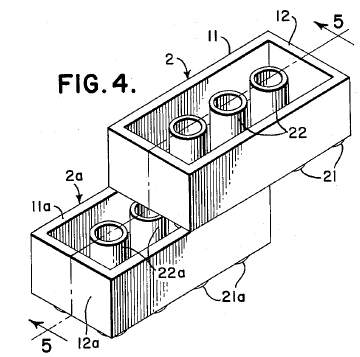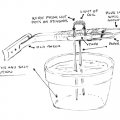A patent may contain drawings that illustrate the invention, embodiments, or prior art. Patent illustrations give an extra edge to the patent to convince the examiner and expedite the entire process of approval. The 2-D or 3-D illustration of the invention improves the readability of the patent. For patents in various technical fields like biotechnology, electronics, life sciences, and more, it becomes difficult to understand the patent if it does not include accurate patent drawings.

As per the patent laws, a patent applicant should furnish at least one drawing or illustration if the invention can be represented through a drawing. The applicant should ensure that the images comply with the PTO requirements for filing utility, design, and trademark applications. Patent drawings are also considered the second language of a patent that helps to facilitate an accurate understanding of the patent. The utility patent illustrations provide a platform for defining the structural aspects of a complex invention in the patent.
If you have the requisite tools and knowledge, you can create it yourself. Or, for better precision and economical patent drawings, you can hire IP professionals or agencies to help you in the process. The drawings should be simple, clear, and accurate. The patent applicant should pay attention to details to produce high-quality utility patent illustrations. Some applicants file informal drawings while making haste to file a patent. The application can suffer a setback if the illustrations fail to comply with USPTO utility patent requirements. The inventor should keep an eye for details to clearly define the proportions, sequencing, lines, numbers, letters, and other elements of utility drawings. Here are some essential factors you should consider while drafting patent drawings.
Physical Requirements
The Patent Office specifies the sheet size for illustrating your invention. As per USTPO, the size of the sheets shall be A4 (29.7 cm x 21 cm). You need to adhere to other hyper-technical details that define various aspects of the sheet, such as the paper type, margins, and more. The detailed specification is paramount because if the patent is issued, these illustrations are printed and published. Hence, the illustrations must facilitate the understanding of the invention to others. You can draw black and white drawings with a pen and ruler or use software to produce graphics. You can also submit color drawings according to the rules specified by USTPO.
Number Of Drawings
To obtain the best disclosure possible, you should include multiple patent drawings to enhance your invention. You can consist of various views of the invention, such as the top, bottom, left, right, or exploded view. In the exploded view, the invention is suspended in space, and it shows each component of the model separated from the other features. You can also break down the inventions and separately illustrate the structure of each part. The number of drawings depends on the varied illustrations of the inventions. You can use many views for the invention, including plan, elevation, section, or perspective views. USTPO defines the rules for proper grouping of views. You can illustrate the drawing in partial views on single or multiple sheets for giant machines or devices. Arrange the sheets properly to assemble the complete figure.
Design And Utility Patent Drawings
As inventions have functional and ornamental aspects, you can apply for both design and utility patents for the same invention. However, design patent illustrations differ significantly from utility patent drawings. Design illustrations show the appearance and exterior look of the invention. On the other hand, utility drawings show the functional elements of the invention. You may submit non-provisional patent applications without drawings. There is a provision to submit the drawings later. However, after filing, you can’t add a new matter. It is recommended to submit your drawings original patent application.
Numbering
You can number the sheets with consecutive Arabic numerals in the middle section on the top of the sheet or right-hand side. The sheets which bear the illustrations can also be numbered, such as “1/5”. According to how they appear on the drawing sheets, the views of the invention are numbered in consecutive Arabic numbers. The view numbers are preceded by the term “FIG.” If there is only one view, you do not have to number it.
Legibility Of Drawings
The drawings should be clear and precise. The views of the drawing should not overlap. A particular view can function as the primary illustration of the patent. All drawings must have lines, letters, and more to give them legibility. You can also include shading if it facilitates understanding the invention and does not harm its legibility. Lead lines between the reference character and the details it refers to should not cross each other. You can also use arrows for referencing if it supports legibility.
To Conclude:
These are some of the critical factors you need to consider while making your patent drawings. High-quality illustrations help to define your invention and enable the applicant to create better and robust applications.






